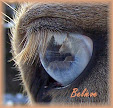In Part 1 we discussed common chemicals in your horse's flyspray. In Part 2, we discussed a few alternative solutions. In this segment, let's discuss the your Essential Oil arsenal.
 There are several pre-made all-natural sprays out there. Nothing wrong with them at all, but you may do better mixing your own. Take a good look at the ingredients label on a commercially prepared all-natural fly spray. You will most likely see less than 4% active ingredients (essential oils or extracts) with the remaining ingredients listed as "Inactive" or "Inert." What does that mean? It means when you're shelling out $15 to $25 for a 32 oz. bottle of "all-natural" flyspray, your paying mostly for water and pretty packaging. (This also holds true for the permethrin- or pyrethrins-based flysprays. If you decide you really need these ingredients to win the battle, you might want to make your own mix. Permethrin 10 is available at TSC and other retailers, just be sure to follow the label directions).
There are several pre-made all-natural sprays out there. Nothing wrong with them at all, but you may do better mixing your own. Take a good look at the ingredients label on a commercially prepared all-natural fly spray. You will most likely see less than 4% active ingredients (essential oils or extracts) with the remaining ingredients listed as "Inactive" or "Inert." What does that mean? It means when you're shelling out $15 to $25 for a 32 oz. bottle of "all-natural" flyspray, your paying mostly for water and pretty packaging. (This also holds true for the permethrin- or pyrethrins-based flysprays. If you decide you really need these ingredients to win the battle, you might want to make your own mix. Permethrin 10 is available at TSC and other retailers, just be sure to follow the label directions).
There are scores of essential oils that insects just don't like. It's wise, however, to test the oils in a small area before treating the entire coat, as some horses are sensitive to some of these oils. If you decide to spot test with a particular oil, be sure to dilute it with a carrier oil before applying. Examples of carrier oils: jojoba, sweet almond, olive, fractionated coconut oil.
So, which oils are effective in warding off insects? If you read everything you can find on the internet, you will probably see that someone at some point has recommended nearly every essential oil known to man. In my trials, I found that a combination of oils works best. Be sure to mix with a carrier oil - most horses do not tolerate "neat" oils. You will also need to mix with water, hydrosols or some other kind of aqueous solution to help dispense the oils evenly. Adding an emulsifier will also aid in blending. Remember, oils are fragile, so mix in small batches (adding a natural preservative such as Vit E or C can help extend the shelf life), store in an opaque dispenser and out of direct sunlight.
Citronella - this is not an "essential oil" per se, but it is a plant-based oil, and usually the first one that pops into mind. DO NOT use the kind that is manufactured to light tiki torches etc. Most effective on mosquitoes, biting flies and ceratopogonidae (aka no-see-ums, mingies, etc)
Neem - again, not an essential oil, but derived from the neem tree (Azadirachta indica). It's not the most pleasant smelling oil, but it does pack a one-two punch. Not only do insects find the aroma unappealing, when a drop of neem oil makes contact with insects it reportedly affects them neurologically and hormonally and inhibits their ability to feed, grow, breed or produce viable eggs.
The following list of EOs for insect repellency is far from all-inclusive, but will give you a place to start. (Be sure to purchase true Essential Oils, not Fragrance Oils as they can have artificial additives and "fake" scents that will not fool a bug).
Eucalyptus & Lemon Eucalyptus - mosquitoes, ticks, lice
Peppermint - biting flies and mosquitoes
Clove - biting flies and mosquitoes
Lavender - fleas, no-see-ums (
Cinnamon - mosquitoes
Cedarwood Atlas - ticks, biting flies(also know to kill ticks, but I cannot verify)
Geranium - ticks and lice
Basil -mosquitoes
Grapefruit - ticks
Lemongrass -mosquitoes
Remember, don't apply the oils straight from the bottle. Most allergic (or worse) reactions occur due to overuse of undiluted oils. Blend just a few drops with a carrier oil. As stated above you may also want to add water or another aqueous solution to disperse the oils more efficiently. A general rule of thumb is that the essential oils should make up 1 to 2% of the finished product. I have had luck using clove-infused vinegar or an herbal "tea" made from neem, oregano and bay leaves. These infusions are an excellent substitute for plain water as this makes your entire ingredient base all "active" ingredients.
Looking for something ready to use for you or your horse? Check out Bella's Repella!
Next up? - More ideas to help control fly population
Looking for something ready to use for you or your horse? Check out Bella's Repella!
Next up? - More ideas to help control fly population








0 comments: